Week 4
We were tasked to work in groups to create a gnomon (projecting piece on a sundial graph that shows the time by the position of its shadow). My group consisted of Kelly and Fina. To do this, we used a sundial diagram; however, a sundial itself, is the most ancient type of timekeeping equipment, denoting the time of day by the location of a shadow produced by an item exposed to the sun’s rays. So we used the sundial diagram, a pin, a small object (Lego house) and the torch on our phones to replicate the sun’s path; we created a gnomon that also helps with solar geometry, which is essentially the relationship between the earth and the sun.
Shadows
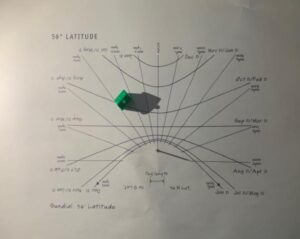
Shadow cast- June 21st- 6pm
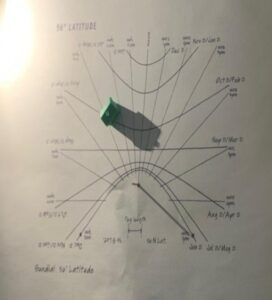
Shadow cast- June 21st- 7pm
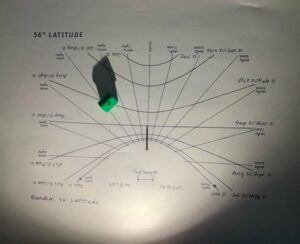
Shadow cast- September/ March 21st- 12pm
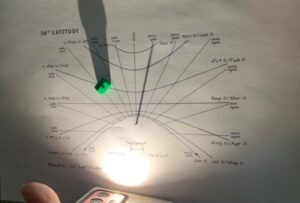
December 21st- 1pm

September/ March 21st- 5pm
According to the images above, June 21st at 6:00 PM and 7:00 PM appear to have the shortest and smallest shadow cast, followed by September/March 21st at 12:00 PM, which appears to be slightly longer in the shadow cast; in comparison to December 21st at 1:00 PM and September/March 21st 5:00 PM, which appear to have much bigger and taller shadow cast. The difference in shadow is caused by the sun’s location at different times of the year; for example, during the winter in December, the sun is set much lower in the sky, giving structures a substantially larger shadow cast; this is also determined by the angle of the sun. In the summer, the sun is higher in the sky; therefore, less light is obstructed, resulting in a much shorter shadow cast.
The stereographic sun path diagram
The stereographic sun path diagram allows you to determine the solar azimuth and altitude for a particular place and we were requested to understand how the diagram works for the first portion of this exercise so we could work in groups for the second section of the activity.
I used the graph to identify various locations of the sun in Edinburgh at different times of day and month to comprehend it better.
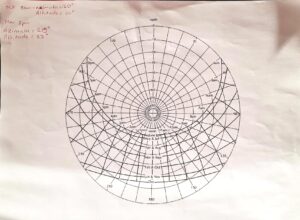
October 8 AM, azimuth= 120 degrees, altitude= 10 degrees
March 2PM, azimuth= 215 degrees, altitude= 33 degrees
Group Model Task
Before the workshop, the class was instructed to make a 15-by-20-centimetre box and then to cut a 4-by-4-centimetre window on one side of the box to provide a hole for the camera so pictures could be taken inside; the box was sealed with tape so no light could permeate except via other apertures we created.
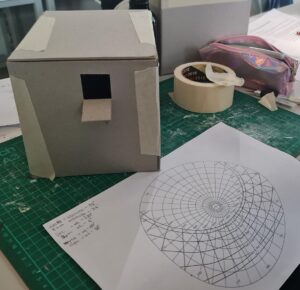
working in groups we utilised the flashlights on our phones to simulate the sun for this activity, so we could capture images inside the box using the stereographic diagram to position the sun (flashlight) at different months and angles while maintaining the box (180 degrees) facing South.

The sun at noon in December is coming in at an altitude of a 15 degrees angle.
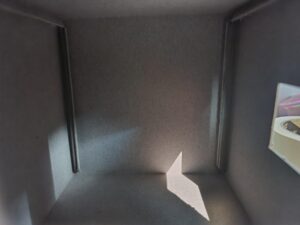
The sun at noon in June is coming in at an altitude of a 62 degrees angle.

The sun at noon in March is coming in at an altitude of a 37 degrees angle.
The task was performed with the box facing South; however, the location of the window we had cut into the box, and the natural light entering the room caused our findings to be unclear; consequently, we switched the orientation of the box with the window facing South.
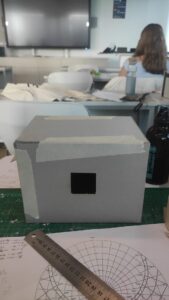
Second position of box with window facing South
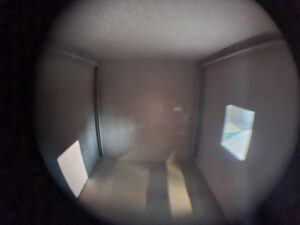
The sun at noon in December is coming in at an altitude of a 15 degrees angle.

The sun at noon in June is coming in at an altitude of a 62 degrees angle.

The sun at noon in March is coming in at an altitude of a 37 degrees angle.
The findings of this experiment reveal that June provided the maximum sunlight on the floor. In December, the wall on your left received the most sunlight, while in March, both the floor and the wall received sunlight.
Model- Skylight
The next task was to create a skylight. To do this, we simply rotated the box so the window faced upwards. This functioned as a skylight while the sun was still entering from the South.

The sun at noon in June is coming in at an altitude of a 62 degrees angle.
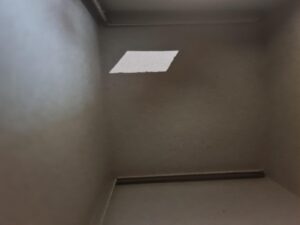
The sun at noon in March is coming in at an altitude of a 37 degrees angle.
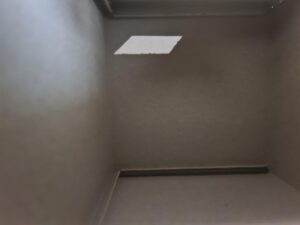
The sun at noon in December is coming in at an altitude of a 15 degrees angle.
As the sun was coming through a higher angle (the skylight), this confirmed that June allowed for the most sunlight to enter the box.
Model- Cut Outs
The final task was to cut shapes into sections of the ceiling; my group decided to cut three triangles of different sizes into a corner of the ceiling to observe how the sunlight would enter, brighten the box with the sharpener and what patterns the light would create.

The sun at noon in December is coming in at an altitude of a 15 degrees angle.
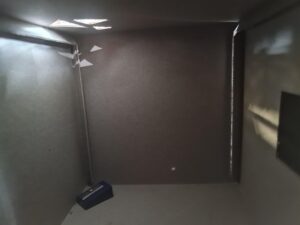
The sun at noon in March is coming in at an altitude of a 37 degrees angle.
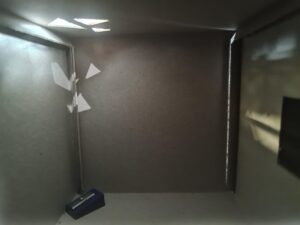
The sun at noon in June is coming in at an altitude of a 62 degrees angle.




Recent comments